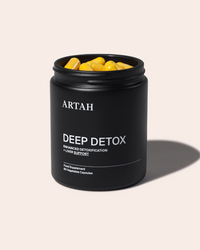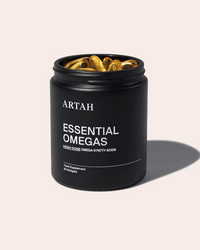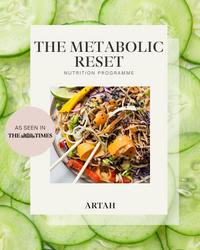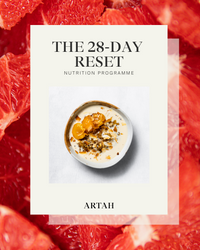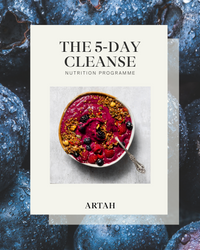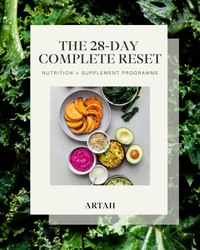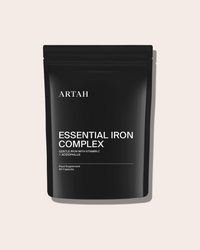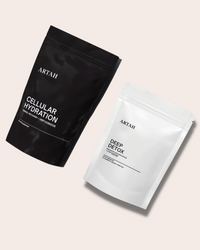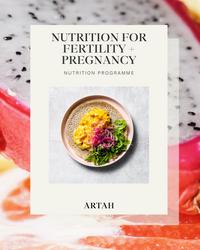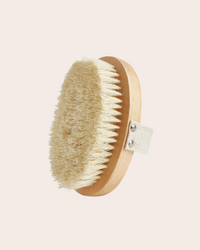Resistant To Weight Loss? These Toxins Might Be The Problem.
Our biology is complex.
There are a host of factors that govern how we process, use, and store the calories we consume, which is why when it comes to weight loss, it’s not as straightforward as calories in, calories out. Even when our nutrition ticks all the right boxes, it can be a real struggle to lose weight. So what are the main drivers of weight loss resistance?
From environmental toxins and pollution to food chemicals and personal care products, we’re exposed to chemicals every day. Whilst some of these chemicals are processed by the body and excreted naturally, others can act as endocrine disruptors – a class of compounds that can trigger imbalances in our hormones and interfere with glucose and cholesterol metabolism, insulin, appetite regulation, gene expression, inflammation, thyroid function and more. Some endocrine disruptors are now being classed as obesogens, meaning they drive obesity and obesity-related chronic disease.
Thankfully, our liver acts as our primary processing centre and handles the detoxification of most of the chemicals we come into contact with. But constant or excess exposure means an increased burden on the liver, and a backlog of toxins and byproducts, so it's important to ensure this essential function gets some TLC. Supporting our detoxification pathways is a two-pronged approach; we need to reduce our exposure to toxins, food chemicals and key endocrine disruptors, as well as fuel our body with the supportive nutrients it needs to function efficiently. Here’s how to get started.
Do a chemical audit of your household products.
- Bisphenol A - found in plastics and canned foods. Many beverages like soft drinks, energy drinks and certain beers use packaging that contains BPA.
- Phthalates – found in plastic food containers, fast food, certain make-up and fragrances. The Environmental Working Group has a database that rates the ‘toxicity’ of cosmetics, and thankfully there are some fantastic clean beauty brands in the market that focus on keeping your cosmetics as safe as possible.
- Glycol ethers – found mainly in cleaning products. Go for more eco-friendly brands that use natural cleaners.
- Triclosan – found in many products labelled ‘anti-bacterial.’ Look for natural alternatives and unless absolutely necessary, try not to over-sanitise.
- Perchloroethylene – found in chemicals used at dry cleaners. There are a host of new ‘green’ dry cleaners that use more environmentally and health-friendly ingredients, so it’s worth asking your local cleaner if they are ‘PERC’ free.
Do a chemical audit of your nutrition.
- High fructose corn syrup – this has been classed as an obesogen because of its ability to drive inflammation, disrupt lipid metabolism and drive insulin dysregulation. Candy, fast food, ultra-processed foods, and commonly processed desserts or treats like Jaffa Cakes and ice creams are laden with HFCS. This is also called glucose-fructose syrup. Swap your processed sweets for more natural, homemade alternatives.
- PCBs – these are primarily found in farmed fish. Aim to choose wild or line caught the majority of the time.
- Propionate – this is commonly found in wheat-based products like commercial/long-life bread, tortillas, pasta, noodles, condensed milk, and processed foods.
- Mercury – found in certain fish, and industrial meat and dairy. Aim to vary your seafood intake and limit the amount of high mercury fish, like swordfish, tuna, and monkfish. Shift the focus to sardines, mackerel, anchovies, salmon and herring (referred to as SMASH fish).
- Pesticides – fruit and vegetables are so important, but they can also be a source of unwanted chemical exposure. But don’t worry, it’s not always necessary to buy organic. The EWG releases their list of Clean 15 and Dirty Dozen each year, which helps consumers navigate the most and least contaminated vegetables and fruits.
- Alcohol – one of the most well known and commonly consumed endocrine disruptors, especially for women, so it's important to be mindful of consumption. Liver support, a nutrient and fibre rich diet, and practices that support natural detoxification are important to include if alcohol is a staple. The quality also matters - look for biodynamic brands or varieties that use less congeners, chemicals and additives.
Support the liver.
Deep Detox has botanicals and phytonutrients that have been shown to protect the liver from chemical damage and encourage the elimination of toxins. Inflammation is also a key driver of endocrine disruption, so consider taking Essential Omegas for a potent dose of anti-inflammatory omega 3s.
Increase plant diversity.
Vitamin, mineral, and antioxidant status will have a dramatic impact on our metabolic pathways, so keeping a diet rich in a variety of plants means you’ll have better exposure to the micronutrients we need to keep the metabolism firing. We’ve said it before, but we’ll say it again – aim for 40 different whole food sources of plants, herbs and spices per week. This is also one of the most impactful ways to keep your microbiome happy. Check out our 28-Day Reset for recipe inspiration.
This article is for educational purposes only and the implementation of the theories and practices discussed is at the sole discretion of the individual. All advice given is not substitute for medical advice, diagnosis, or treatment. If you have any concerns about your health, you should speak with your physician.












